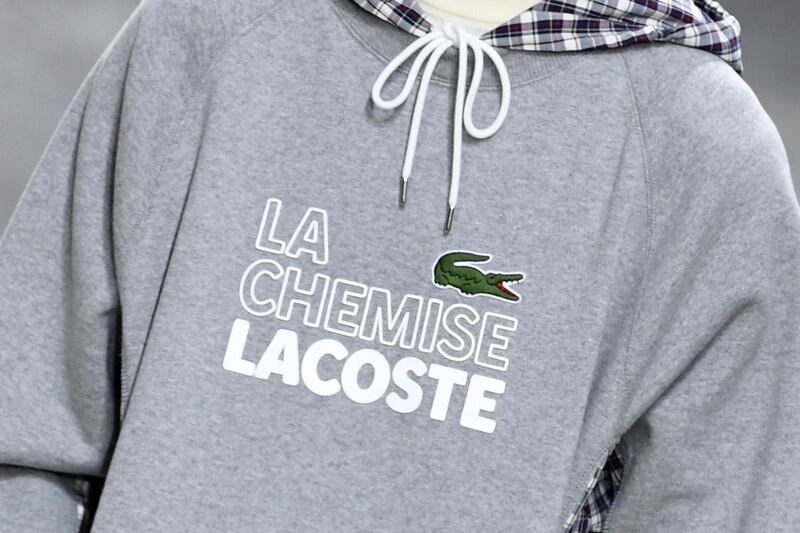French fashion brand Lacoste on Wednesday swapped the crocodile logo on its shirts for the first time in its history for 10 of the most endangered species on the planet.
The green Lacoste crocodile – one of the world's best-known logos – was replaced by the Sumatran tiger, the Javan rhino and the Cao Vit gibbon on the chest of its classic white polo shirts in a limited-edition charity tie-in with the Save Our Species conservation group.
All but a handful were sold out within hours of going on sale for €150 (Dh672) immediately after the brand's Paris Fashion Week show.
Sorry for the delay everyone! #LacosteSaveOurSpecies is now live: https://t.co/2rG6B877mA pic.twitter.com/saNU1fvnea
— Lacoste (@LACOSTE) February 28, 2018
The number of polo shirts put on sale was directly linked to remaining numbers of each threatened species surviving in the wild – with only 30 for vaquita porpoises and 231 for Californian condors.
Designer Felipe Oliveira Baptista also included camouflaged images of each of the endangered animals in the last 10 looks in his autumn-winter collection.
"I think it is a great thing to do, and feels very gratifying if we can do something for these animals," he said. "Lacoste is one of the 10 more recognisable logos in the world with Coca-Cola and Apple."
The Portuguese designer said he had to be careful about using the crocodile logo – which dates from 1933 – "with respect. I don't like to plaster it everywhere. Either you be very classic with it or very original, and in this case it's quite original I think."
Lacoste's crocodile logo still features on the back of the 1,775 shirts.
_______________________
Read more:
Marine patrols to intensify following dead dugong discovery on Abu Dhabi coast
Protect our endangered reef sharks from the illegal fishing trade
The world's most interesting (and conservation-focused) wildlife trips for 2018
_______________________





